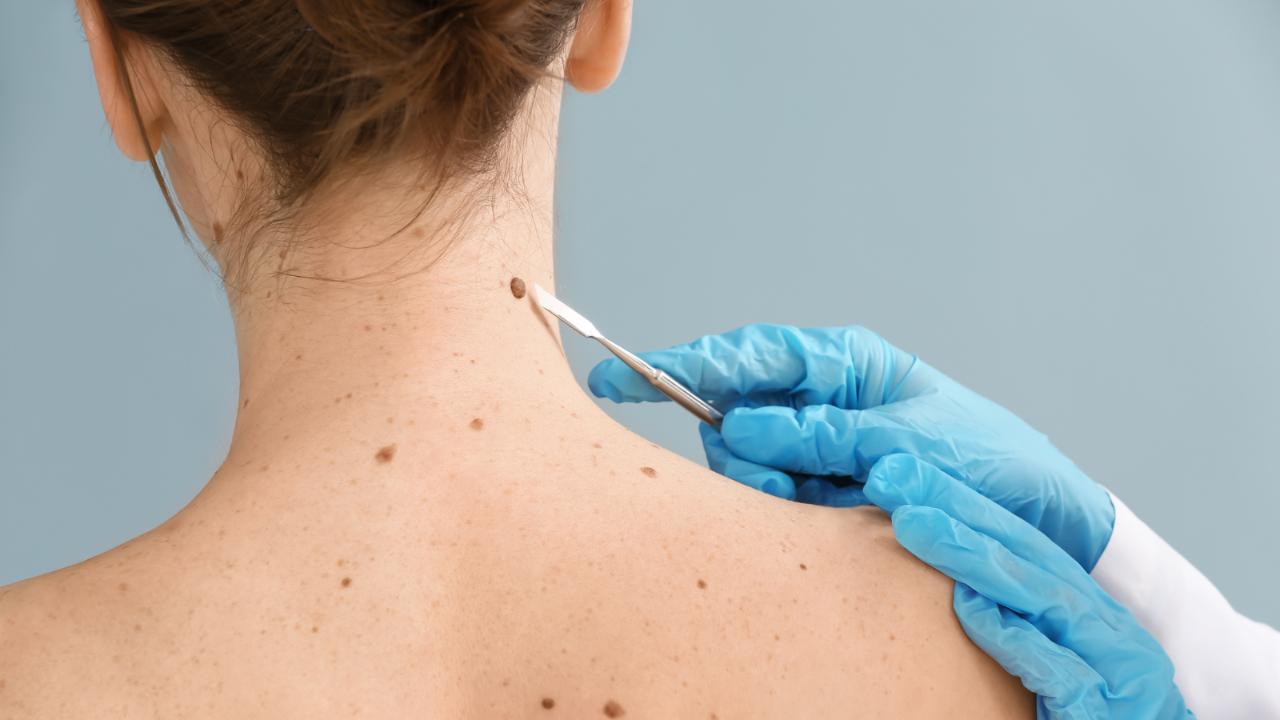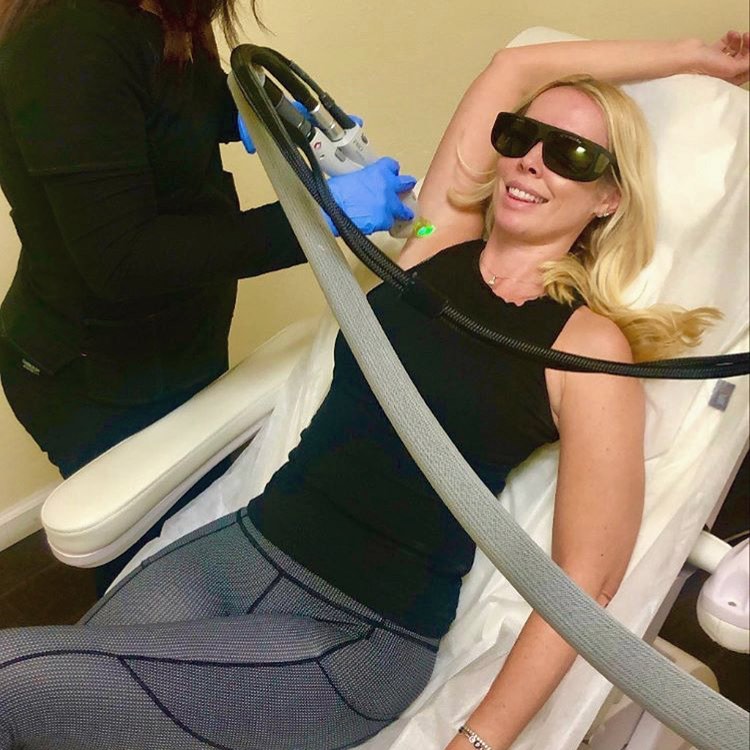Flawless Skin Starts Here: Discover Innovative Skin Tag Removal Techniques. Spoiled Laser, your ultimate destination for beauty transformation, presents a comprehensive range of premium services designed to help you look and feel your best. Among our offerings is our specialized skin tag removal treatment, utilizing innovative techniques that effectively eliminate skin tags, allowing you to achieve the flawless skin you desire. With our expert team of professionals and state-of-the-art technology, we are dedicated to providing you with top-notch care and exceptional results. Explore our innovative skin tag removal techniques and embark on your journey to flawless skin today.
Understanding Skin Tags
Skin tags are small, soft, benign growths that appear on the skin’s surface. They are composed of loosely connected collagen fibers and blood vessels, covered by a layer of skin. Skin tags are typically flesh-colored or slightly darker and can vary in size from a few millimeters to a few centimeters in diameter. Although skin tags are harmless and painless, they can be bothersome or unsightly to some individuals, particularly if they are located in highly visible areas.
Get Your Free Consultation Today
Causes of Skin Tags
The exact cause of skin tags is not fully understood. However, various factors may contribute to their development. Friction or rubbing of the skin against clothing or adjacent skin is believed to be a common cause. Skin folds, such as those found in the neck, underarms, groin, or eyelids, are particularly prone to skin tag formation due to increased friction in these areas. Hormonal changes, such as those occurring during pregnancy or in individuals with hormonal imbalances, may also play a role in the development of skin tags.
Common Locations of Skin Tags
Skin tags can occur in numerous locations on the body. Some of the most common areas where skin tags are found include the neck, underarms, groin, eyelids, and under the breasts. However, they can also develop on the face, chest, back, and other parts of the body. The presence of skin tags in certain areas can be more bothersome due to their visibility or potential for irritation from clothing or jewelry.
Types of Skin Tags
Skin tags can vary in appearance and characteristics. They can be broadly classified into three types:
- Pedunculated skin tags: These are the most common type and are characterized by a narrow stalk that attaches the tag to the skin’s surface.
- Acrocordons: Also known as fibroepithelial polyps, these skin tags tend to be smaller and are often flesh-colored or slightly darker.
- Irritated skin tags: In some cases, skin tags can become irritated, inflamed, or infected due to friction or trauma. These irritated skin tags may appear reddened, swollen, or painful.
Traditional Skin Tag Removal Techniques
Various traditional methods have been used for the removal of skin tags. While these techniques may still be effective, they can involve more discomfort, scarring, and longer healing times compared to innovative techniques. Some commonly used traditional skin tag removal techniques include:
Tying Off
Tying off involves tying a thin thread or dental floss tightly around the base of the skin tag to cut off its blood supply. Over time, the deprived blood flow causes the skin tag to shrink and eventually fall off. This technique can be effective but may require several days or weeks for the skin tag to completely detach.
Cutting
Cutting involves using medical scissors or a scalpel to remove the skin tag. Local anesthesia is often used to minimize pain during the procedure. While cutting can provide immediate results, it may result in bleeding and a longer healing time compared to other methods.
Burning
Burning, also known as cauterization, uses a heated device to burn off the skin tag. This technique seals blood vessels during the process, minimizing bleeding. However, burning can cause discomfort during the procedure and may require a longer healing time.
Freezing
Freezing, also known as cryotherapy, involves applying liquid nitrogen to the skin tag to freeze and destroy its cells. This method can be effective but may cause slight discomfort and result in temporary redness or blistering of the surrounding skin.
Innovative Skin Tag Removal Techniques
In recent years, innovative techniques for skin tag removal have emerged, offering improved efficiency and outcomes. These advanced methods utilize advanced technology to target and remove skin tags with precision and minimal discomfort. Some of the innovative skin tag removal techniques include:
Laser Skin Tag Removal
Laser skin tag removal uses a focused laser beam to break down the skin tag’s cells without causing damage to the surrounding skin. The laser energy is absorbed by the pigment in the skin tag, leading to the gradual shrinking and elimination of the tag. This technique is quick, precise, and typically leaves minimal scarring.
Cryotherapy for Skin Tag Removal
Cryotherapy involves the use of freezing agents, such as liquid nitrogen, to freeze and destroy skin tags. The extreme cold temperature causes the tag’s cells to die, leading to its eventual removal. Cryotherapy is a fast and effective technique that requires little downtime and usually results in minimal scarring.
Electrocautery
Electrocautery is a technique that uses a high-frequency electrical current to burn and vaporize skin tags. This method provides quick and precise removal, with the heat sealing blood vessels to minimize bleeding. Electrocautery is well-tolerated by most individuals and generally results in minimal scarring.
Radiofrequency for Skin Tag Removal
Radiofrequency skin tag removal involves the use of radiofrequency energy to heat and remove skin tags. The controlled energy delivery selectively destroys the tag’s cells while leaving the surrounding skin unharmed. This technique is efficient, causes minimal discomfort, and typically produces little to no scarring.
Chemical Skin Tag Removal
Chemical skin tag removal involves the application of certain chemicals, such as trichloroacetic acid (TCA), to the skin tag. The chemical solution causes the tag to dry up and eventually fall off. Chemical skin tag removal is a non-invasive technique that is often used for smaller tags and can be performed at home or by a healthcare professional.
Benefits of Innovative Techniques
The innovative techniques for skin tag removal offer several advantages compared to traditional methods. Some of the benefits of using these advanced techniques include:
Efficiency
Innovative techniques such as laser removal, cryotherapy, and electrocautery are quick and efficient methods for removing skin tags. They require minimal time and produce immediate results, allowing individuals to return to their normal activities sooner.
Less Scarring
Innovative techniques are designed to minimize scarring and damage to the surrounding skin. Laser skin tag removal, radiofrequency removal, and cryotherapy have been shown to leave minimal scarring, resulting in more aesthetically pleasing outcomes.
Minimal Pain or Discomfort
Compared to traditional methods, innovative techniques for skin tag removal often involve minimal pain or discomfort. Local anesthesia or cooling techniques may be used to numb the area during the procedure, ensuring a more comfortable experience for the individual.
Quicker Healing Time
Due to their less invasive nature, innovative techniques typically result in quicker healing times compared to traditional methods. Individuals who undergo laser removal, cryotherapy, or electrocautery can expect faster recovery and a reduced risk of complications.
Precision
Innovative techniques offer precise removal of skin tags, targeting the tag itself without affecting the surrounding healthy skin. This precision ensures better cosmetic outcomes and reduces the risk of complications during the removal process.
Factors to Consider Before Skin Tag Removal
Before undergoing any skin tag removal procedure, there are several factors that should be taken into consideration. These factors include:
Skin Type and Sensitivity
Different skin types may respond differently to various removal techniques. It is important to consider your skin’s sensitivity and any known allergies or reactions to certain treatments. Consulting with a dermatologist can help determine the most suitable removal option for your specific skin type.
Location of the Skin Tags
The location of the skin tags is also an important factor to consider when choosing a removal technique. Areas with thinner or more delicate skin, such as the eyelids or genital area, may require specialized treatment options. The size and accessibility of the skin tags may also influence the choice of removal technique.
Size and Number of Skin Tags
The size and number of skin tags can impact the choice of removal technique. Larger or multiple skin tags may require a more aggressive or specialized approach for effective removal. Discussing the size and number of skin tags with a dermatologist can help determine the most appropriate treatment plan.
Cost and Budget
The cost of skin tag removal varies depending on the technique chosen and the location or expertise of the provider performing the procedure. It is important to consider your budget and financial limitations when deciding on a removal method. Some techniques may be covered by insurance if deemed medically necessary, so it is advisable to check with your insurance provider.
Preferences and Expectations
Personal preferences and expectations should also be taken into account. Some individuals may prefer a non-invasive and quick removal method, while others may prioritize minimizing scarring or discomfort. Discussing your expectations and concerns with a dermatologist can help determine the best approach for you.
Preparation for Skin Tag Removal
Before undergoing a skin tag removal procedure, proper preparation is essential. The steps involved in preparing for skin tag removal include:
Consultation with a Dermatologist
A consultation with a dermatologist is the first step in the preparation process. During the consultation, the dermatologist will evaluate your skin tags, discuss your goals and expectations, and recommend the most suitable removal technique based on your individual needs.
Medical History Evaluation
The dermatologist will also evaluate your medical history to ensure that you are a suitable candidate for the chosen removal technique. They will inquire about any allergies, current medications, or underlying medical conditions that may affect the procedure or recovery process.
Pre-Procedure Instructions
The dermatologist will provide you with pre-procedure instructions to follow before your scheduled removal appointment. These instructions may include guidelines on avoiding certain medications or skincare products that could interfere with the procedure or affect the healing process.
Skin Cleaning and Sterilization
On the day of the removal procedure, it is important to thoroughly clean the area around the skin tags to be removed. This helps minimize the risk of infection. The dermatologist or healthcare provider will also sterilize the area before beginning the removal process to maintain a clean and sterile environment.
Aftercare and Recovery
After the skin tag removal procedure, proper aftercare is crucial to ensure a smooth and successful recovery. The steps involved in aftercare and the recovery process include:
Post-Procedure Instructions
The dermatologist or healthcare provider will provide post-procedure instructions that should be followed carefully. These instructions may include guidelines on caring for the treated area, applying any prescribed ointments or dressings, and avoiding certain activities or products that could interfere with the healing process.
Potential Side Effects and Complications
Although skin tag removal procedures are generally safe, there can be potential side effects or complications. These may include temporary redness, swelling, or mild discomfort at the treated area. In rare cases, infection or scarring may occur. It is important to be aware of these potential risks and report any unusual symptoms or concerns to your healthcare provider.
Tips for a Smooth Recovery
To facilitate a smooth recovery, it is advisable to keep the treated area clean and dry. Avoid picking or scratching at the scabs or treated area, as this can increase the risk of infection or scarring. Follow any additional recommendations provided by your healthcare provider, such as avoiding sun exposure or wearing protective clothing.
Monitoring for Recurrence or New Skin Tags
Following removal, it is important to monitor the treated area for any signs of recurrence or the development of new skin tags. Regular self-examination and routine check-ups with a dermatologist can help ensure early detection and prompt treatment if necessary.
Home Remedies to Prevent and Remove Skin Tags
In addition to professional removal techniques, there are several home remedies that individuals may try to prevent or remove skin tags. While these remedies may not be as effective or efficient as professional methods, some individuals may find them helpful. It is important to note that home remedies should be used with caution, and any concerning or persistent skin tags should be evaluated by a dermatologist. Some common home remedies for preventing and removing skin tags include:
Apple Cider Vinegar
Apple cider vinegar is a popular home remedy for various skin conditions, including skin tags. Applying apple cider vinegar to the skin tag may help dry it out and eventually cause it to fall off. However, care should be taken as apple cider vinegar may cause skin irritation or burning in some individuals.
Tea Tree Oil
Tea tree oil is known for its antiseptic and antifungal properties. Applying diluted tea tree oil to the skin tag may help dry it out and promote its removal. However, tea tree oil can cause skin irritation or allergic reactions in some individuals, so a patch test is recommended before regular use.
Garlic
Garlic has natural antibacterial and antifungal properties. Crushing a garlic clove and applying it to the skin tag may help break down the tag and promote its removal. However, garlic can cause skin irritation or burning in some individuals, so it should be used with caution.
Duct Tape
Some individuals claim that covering the skin tag with duct tape can help remove it. The tape is left on for several days, and its adhesive properties are believed to suffocate the tag and cause it to fall off. However, there is limited scientific evidence to support the effectiveness of this method.
Diet and Lifestyle Changes
Maintaining a healthy diet and lifestyle can contribute to overall skin health and potentially reduce the risk of developing skin tags. Eating a balanced diet rich in fruits, vegetables, and whole grains, and avoiding excessive weight gain or obesity, may help prevent the formation of skin tags.
Professional vs DIY Skin Tag Removal
When it comes to removing skin tags, individuals have the option to choose between professional removal or trying DIY methods at home. It is important to consider the following factors when deciding between professional and DIY skin tag removal:
Safety and Risks
Professional skin tag removal techniques are performed by trained healthcare professionals, minimizing the risk of complications or infections. DIY methods, on the other hand, may carry a higher risk of infection or scarring, especially if improper techniques or products are used.
Effectiveness
Professional removal techniques are generally more effective and efficient compared to DIY methods. Professional techniques, such as laser removal, cryotherapy, or electrocautery, are designed to target and remove skin tags with precision. DIY methods may not provide the same level of effectiveness and may require repeated attempts for successful removal.
Expertise and Precision
Healthcare professionals have the expertise and knowledge to assess your skin tags and recommend the most appropriate removal technique. They are skilled at performing the procedures safely and efficiently, ensuring minimal discomfort and optimal outcomes. DIY methods lack the precision and expertise that professionals can provide.
Cost Comparison
The cost of professional skin tag removal can vary depending on the technique chosen and the provider performing the procedure. While professional removal may involve a higher upfront cost, it may be more cost-effective in the long run due to its efficiency and minimal risk of complications. DIY methods may seem more affordable initially, but they may require additional products or attempts, increasing the overall cost.
Time and Convenience
Professional removal techniques require a single visit to a healthcare provider, resulting in immediate removal and minimal downtime. DIY methods may require repeated attempts or longer healing times, affecting convenience and time required for complete removal.
Conclusion
Skin tags are common benign growths that can be bothersome or unsightly to some individuals. Understanding the different types, causes, and locations of skin tags is essential in determining the most suitable removal technique. Traditional skin tag removal methods, such as tying off, cutting, burning, and freezing, have been used for many years but may result in more scarring, discomfort, or longer healing times compared to innovative techniques.
Innovative skin tag removal techniques, such as laser removal, cryotherapy, electrocautery, radiofrequency, and chemical methods, offer several advantages over traditional methods. These techniques provide efficiency, precision, minimal pain or discomfort, quicker healing times, and less scarring. Factors such as skin type, location, size, budget, preferences, and expectations should be considered before undergoing skin tag removal.
Preparation for skin tag removal involves a consultation with a dermatologist, medical history evaluation, and following pre-procedure instructions. Aftercare and recovery involve complying with post-procedure instructions, monitoring for potential side effects or complications, and taking steps to promote a smooth recovery.
While professional removal techniques offer optimal results, individuals may also consider DIY methods using home remedies such as apple cider vinegar, tea tree oil, garlic, duct tape, and diet and lifestyle changes. However, it is important to exercise caution and consult a dermatologist if any concerns or persistent skin tags arise.
Ultimately, the choice between professional and DIY skin tag removal depends on safety, effectiveness, expertise, cost, time, and convenience. Seeking professional removal techniques can provide a reliable and efficient solution, ensuring the best possible outcomes for individuals dealing with skin tags.





